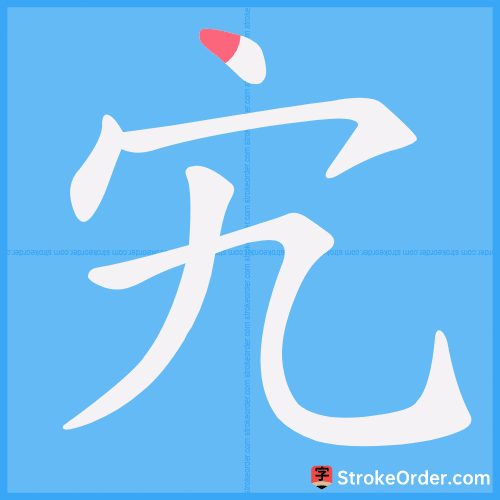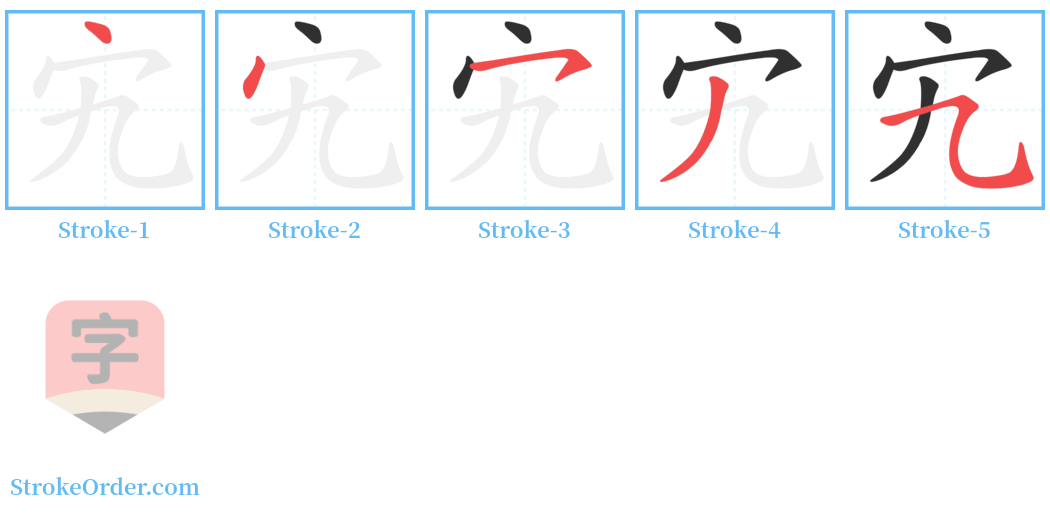宄 Stroke Order
Animated Stroke Order of 宄

Stroke Order Diagrams for 宄

Step-by-Step Handwriting Guide for 宄

Learn to Write Chinese Characters with Video Tutorials
Watch the video of writing the Chinese character "宄", learn the correct stroke order (笔顺) of the character "宄", and master the standard way of writing the character "宄".
Free Printable Handwriting Practice with Stroke Order: 宄
Printable Writing Practice Worksheet of "宄" in Portrait Orientation (Tian Zi Ge)

Printable Writing Practice Worksheet of "宄" in Landscape Orientation (Tian Zi Ge)

Information of 宄
Pinyin
guǐ
Radical
宀
Strokes
5 strokes
Usage
★★★
Definition
traitor
宄 [guǐ]
1. Treasonous, rebellious.
2. A general term for bad people, rogues.
宄 [guǐ]
1. Treasonous, rebellious. "Shuowen Jiezi": "宄 means treachery. Externally it is a thief, internally it is a traitor."
2. A general term for bad people, rogues. "Records of the Three Kingdoms, Vol. 47, Wu Shu, Biography of Wu Emperor Quan": "Moreover, now treachery and treason are competing, with wolves filling the roads."
宄 [guǐ] (Verb)
(Phonetic compound. From 宀 (mián), nine sounds. Basic meaning: make internal disorder or usurp.) Same as the basic meaning. (English: make internal disorder or usurp.)
宄 [guǐ] (Noun)
A person who causes chaos or theft. (English: a thief; a treacherous fellow.)
引
1. "Shuowen": 宄 means treachery. Externally it is a thief, internally it is a traitor.
2. "Book of Rites": The crowned thief is a traitor. Note: "Internally it is called 宄."
3. "Guangyun": 宄 means an internal thief.
4. "Book of Documents, The Oath of the Shepherd": Let us inflict violence upon the people, with treachery in the business of the state.
5. "National Language, Jin Yu Six": Internal disorder is called 宄, and external is called treachery. Manage treachery with virtue, manage treason with punishment.
宄 [guǐ] (Noun)
A person who causes chaos or theft. (English: a thief; a treacherous fellow.)
引
1. "Book of Han, Biography of Xin Qiji": Treachery and rebellion cannot stir but will be obliterated.
2. "National Language": Those who destroy are thieves, those who conceal thieves are accomplices, those who steal treasures are 宄, and those who use the treasures of the 宄 are treacherous.